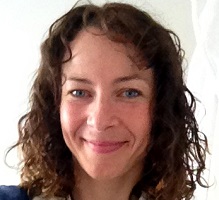1.25: Resumen de la aplicación de la teoría de grupos a los movimientos moleculares
- Page ID
- 69934
\( \newcommand{\vecs}[1]{\overset { \scriptstyle \rightharpoonup} {\mathbf{#1}} } \)
\( \newcommand{\vecd}[1]{\overset{-\!-\!\rightharpoonup}{\vphantom{a}\smash {#1}}} \)
\( \newcommand{\id}{\mathrm{id}}\) \( \newcommand{\Span}{\mathrm{span}}\)
( \newcommand{\kernel}{\mathrm{null}\,}\) \( \newcommand{\range}{\mathrm{range}\,}\)
\( \newcommand{\RealPart}{\mathrm{Re}}\) \( \newcommand{\ImaginaryPart}{\mathrm{Im}}\)
\( \newcommand{\Argument}{\mathrm{Arg}}\) \( \newcommand{\norm}[1]{\| #1 \|}\)
\( \newcommand{\inner}[2]{\langle #1, #2 \rangle}\)
\( \newcommand{\Span}{\mathrm{span}}\)
\( \newcommand{\id}{\mathrm{id}}\)
\( \newcommand{\Span}{\mathrm{span}}\)
\( \newcommand{\kernel}{\mathrm{null}\,}\)
\( \newcommand{\range}{\mathrm{range}\,}\)
\( \newcommand{\RealPart}{\mathrm{Re}}\)
\( \newcommand{\ImaginaryPart}{\mathrm{Im}}\)
\( \newcommand{\Argument}{\mathrm{Arg}}\)
\( \newcommand{\norm}[1]{\| #1 \|}\)
\( \newcommand{\inner}[2]{\langle #1, #2 \rangle}\)
\( \newcommand{\Span}{\mathrm{span}}\) \( \newcommand{\AA}{\unicode[.8,0]{x212B}}\)
\( \newcommand{\vectorA}[1]{\vec{#1}} % arrow\)
\( \newcommand{\vectorAt}[1]{\vec{\text{#1}}} % arrow\)
\( \newcommand{\vectorB}[1]{\overset { \scriptstyle \rightharpoonup} {\mathbf{#1}} } \)
\( \newcommand{\vectorC}[1]{\textbf{#1}} \)
\( \newcommand{\vectorD}[1]{\overrightarrow{#1}} \)
\( \newcommand{\vectorDt}[1]{\overrightarrow{\text{#1}}} \)
\( \newcommand{\vectE}[1]{\overset{-\!-\!\rightharpoonup}{\vphantom{a}\smash{\mathbf {#1}}}} \)
\( \newcommand{\vecs}[1]{\overset { \scriptstyle \rightharpoonup} {\mathbf{#1}} } \)
\( \newcommand{\vecd}[1]{\overset{-\!-\!\rightharpoonup}{\vphantom{a}\smash {#1}}} \)
- Las traducciones atómicas o moleculares se transforman de la misma manera que\(x\), \(y\), \(z\) (or \(T_x\), \(T_y\), \(T_z\)) functions listed in the character tables.
- Las rotaciones moleculares se transforman de la misma manera que\(R_x\), \(R_y\), \(R_z\) functions listed in the character tables.
- Las representaciones irreducibles abarcada por los movimientos de una molécula poliatómica se pueden determinar usando el\(3N\) Cartesian basis, made up of \(x\), \(y\), \(z\) axes on each atom. The characters of the matrix representatives are best determined using a table as follows:\[\begin{array}{ll} \text{Operation:} & \text{List the symmetry operations in the point group} \\ \Gamma_{\text{Cart}} & \text{List the characters for} \: x + y + z \: \text{(from the character table) for each operation} \\ N_{\text{unshifted}} & \text{List the number of atoms in the molecule that are unshifted by each symmetry operation} \\ \Gamma_{3N} & \text{Take the product of the previous two rows to give the characters for} \: \Gamma_{3N} \end{array}\]
- Las representaciones irreducibles abarcada por las vibraciones moleculares se determinan restando primero los caracteres para rotaciones y traducciones de los caracteres\(\Gamma_{3N}\) para dar los caracteres para\(\Gamma_{\text{vib}}\) y luego usar la fórmula de reducción o inspección de la tabla de caracteres para identificar las representaciones irreducibles que contribuyen a\(\Gamma_{\text{vib}}\) .
- Los desplazamientos moleculares para las vibraciones de cada simetría se pueden determinar mediante el uso de operadores de proyección en el\(3N\) Cartesian basis vectors to generate SALCs.
- Alternativamente, se puede usar una base de coordenadas internas (longitudes y ángulos de unión) para investigar las vibraciones de estiramiento y flexión. Determinar los caracteres, identificar las representaciones irreducibles y construir las SALC.
Colaboradores y Atribuciones
Claire Vallance (University of Oxford)


